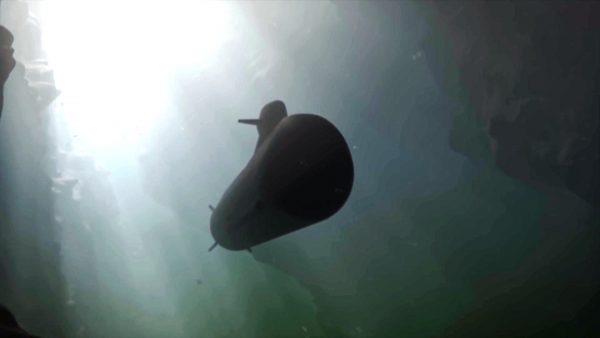
US Navy's next sub: Super stealthy and now underwater aircraft carrier?
If technological progress allowed for it, the United States Navy would like to develop two key features for its next-generation SSN(X) successor to theVirginia-class attack submarines. One feature would effectively turn the future attack submarine into a underwater mother-ship for unmanned underwater vehicles (UUV) while another would dispense with noise-generating moving parts such as a propulsor or driveshaft in the propulsion system.
'I would like some organic means of designing the submarine from the ground up that would seamlessly integrate UUVs,' Rear Adm. Michael Jabaley, the Navy's program executive officer for submarines told theHouse Armed Services Committee on July 14. 'The dream actually would be if you have ever seen remorasthose are the little fish the suck onto the big fish and go along and not seem to effect the big fish at all, ride in the stream, and then, when it's time for them to go do something, they do and then come back. So that's forward thinking.'
Jabaley acknowledged that such a feat is still a technological leap. However, it would be a vast improvement on the current system of using every opening on a submarine to deploy a UUV. The Navy's undersea force uses everything from torpedo tubes to the submarines' trash chute to launch UUVs. A system such as the one Jabaley envisions would allow a future attack submarine to launch and recover UUVs at will. That would effectively turn the boat into an underwater equivalent of an aircraft carrieraffording the vessel the ability to influence a vast area under the ocean.
The second innovation Jabaley wishes the Navy could develop is also inspired by naturea biomimetic propulsion system that would eliminate a drive shaft and the spinning blades of a propulsor. If successful, that would lead to a revolutionary leap in acoustic performance. 'At some point we're going to have to move beyond a rotating mechanical device to push the ship through the water,' Jabaley said. 'Although we're not there yet on the oceans being transparent, one of the biggest things that causes noise to be radiated into the water is the rotating machinery and the propulsor itself moving through the water and exciting various parts of the stern and the submarine to radiate noise.'
The Navy has essentially reached the limits of what is possible for acoustic signature reduction with a purely mechanical system. While the future Ohio Replacement Programand potentially even a follow-on attack submarineare expected to use a permanent magnetic motor to increase stealth, Jabaley wants to take a step further. 'The field of biomimetics is very interesting to me when you look at nature in actions and you think: 'Boy, it would be great if we could design something that would take that leap forward and get us into a realm that would be acoustic-self unlike anything we've ever done before,'' Jabaley said.
Jabaley cautions, however, that it will take a long time to reach such a lofty technical goal. Such propulsion systems have long been the holy grail of the submarine community. Indeed, Tom Clancy's classic novel and movieThe Hunt For Red October featured a fictional modified Soviet-built Project 941 Akulaor Typhoon-classballistic missile submarine fitted with a magneto-hydrodynamic drive. However, in real life, the technology proved to be a dead-end when Japan's Yamato-1 prototype failed to deliver on the promises of speed and efficiency.
Dave Majumdar is the defense editor of The National Interest. You can follow him on Twitter DaveMajumdar.
This story first appeared in The National Interest. It is republished here with permission.

Legal Disclaimer:
MENAFN provides the
information “as is” without warranty of any kind. We do not accept
any responsibility or liability for the accuracy, content, images,
videos, licenses, completeness, legality, or reliability of the information
contained in this article. If you have any complaints or copyright
issues related to this article, kindly contact the provider above.


















Comments
No comment